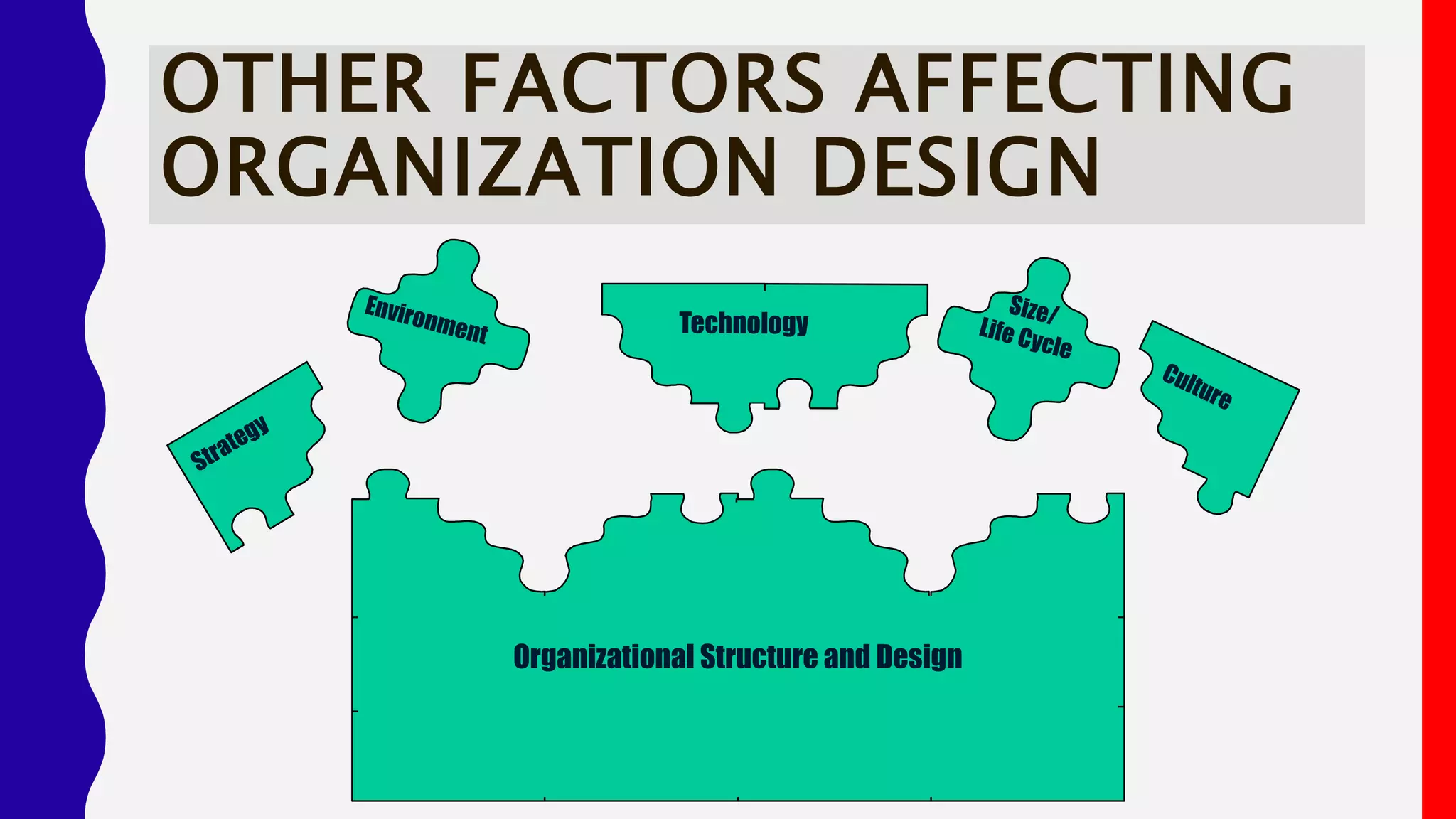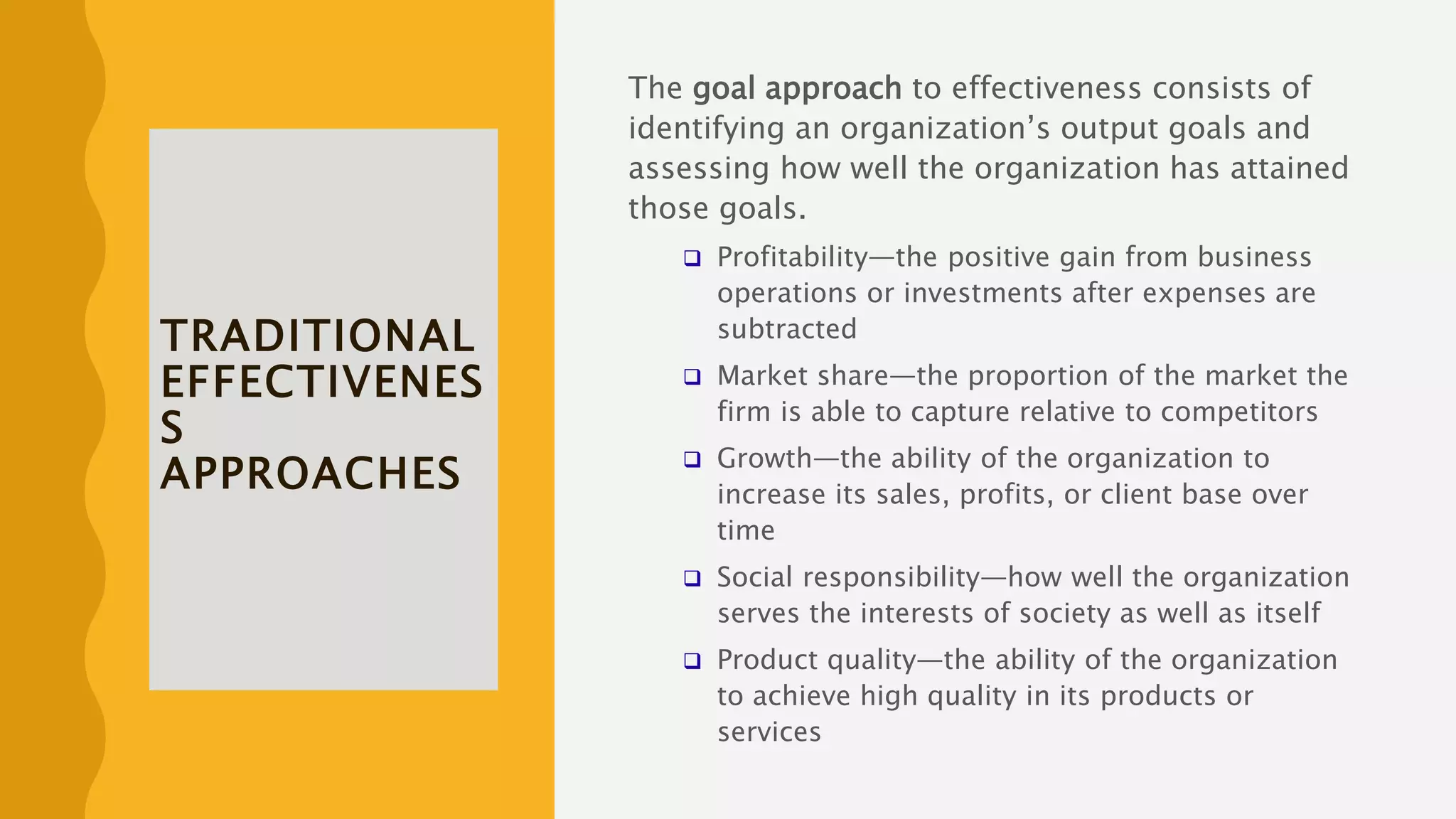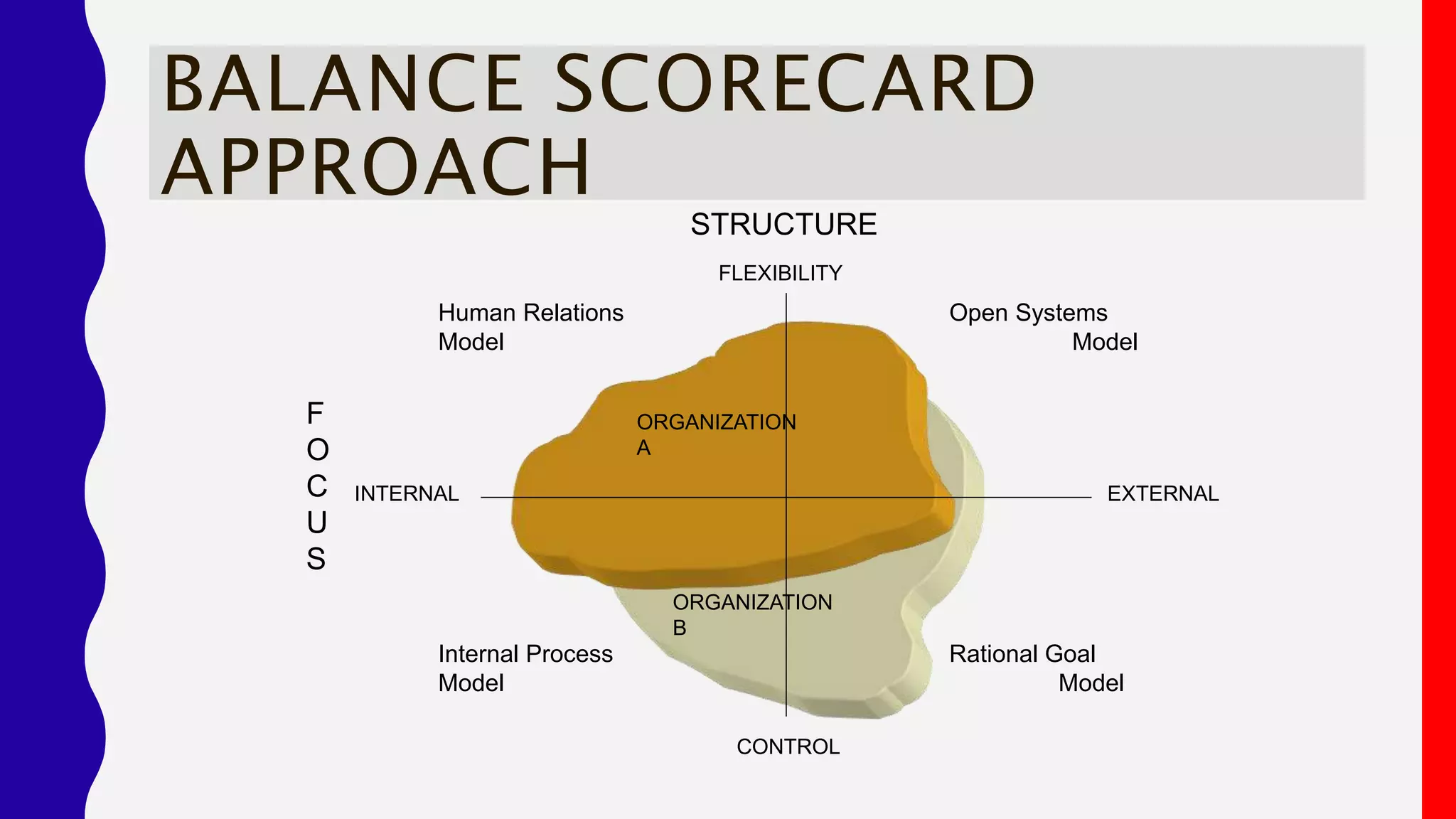This document discusses frameworks for organizational strategy, design, and effectiveness. It describes how top management determines goals and strategy that influence organizational design. Different strategies like differentiation, low-cost leadership, and prospector/defender require different design characteristics for efficiency or flexibility. Effectiveness is difficult to measure but can be assessed through goals, resources, internal processes, and strategic constituents. The balanced scorecard provides a holistic approach measuring financial, customer, internal business process, and learning/growth perspectives.























